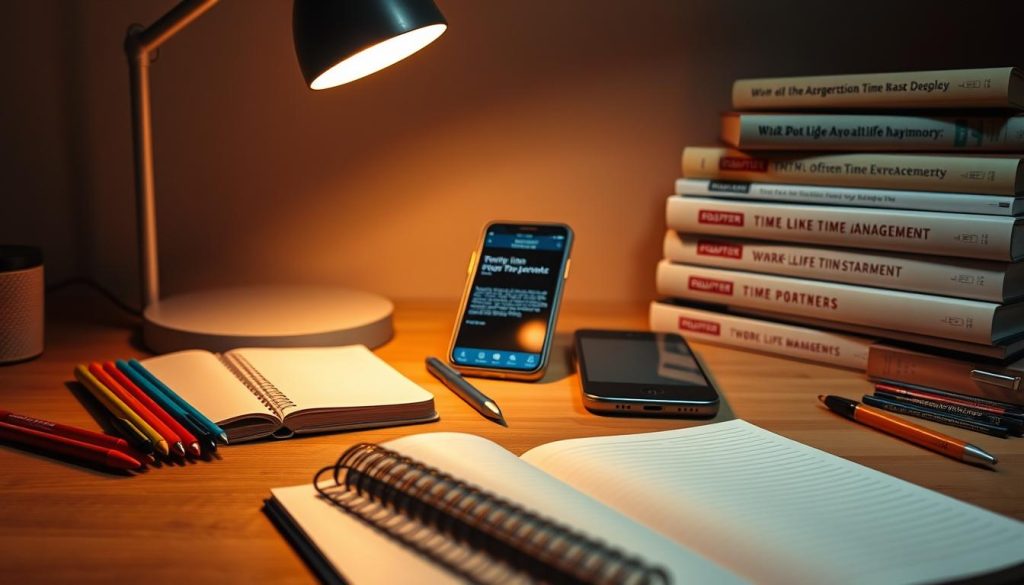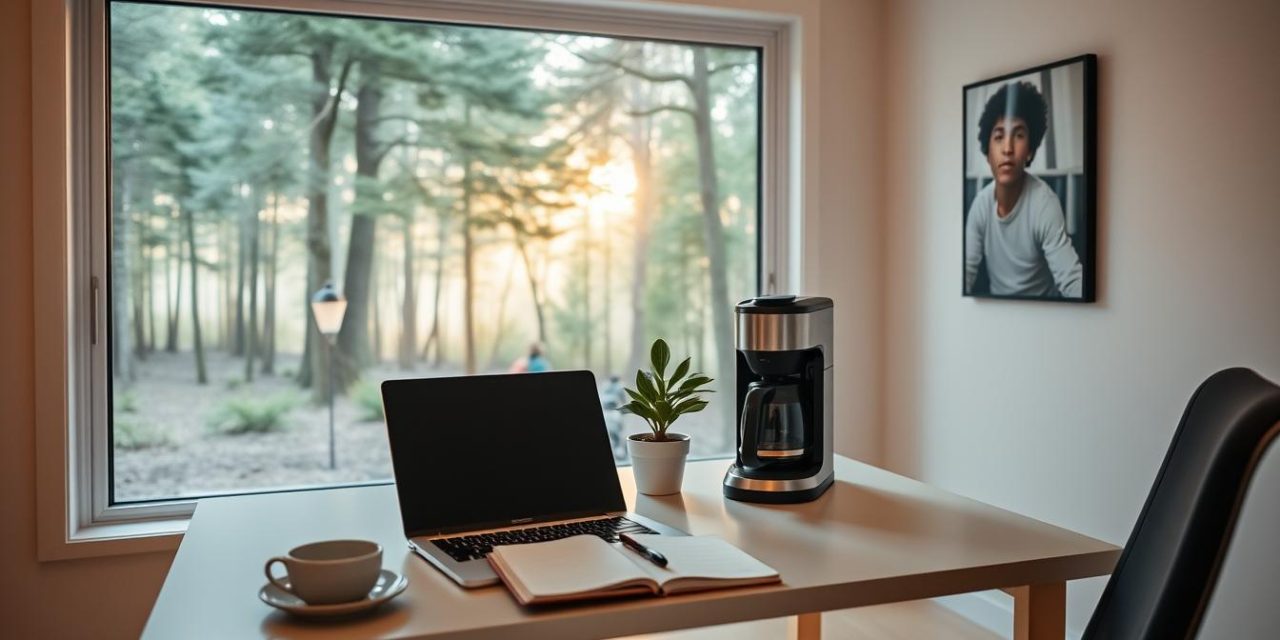As an independent professional, managing your work responsibilities and personal life can be a daunting task. Unlike traditional employees with set schedules, you must create your own boundaries to prevent work from consuming your entire life. Achieving a balance between your professional and personal life is crucial for your success and overall wellbeing.
The concept of harmony in your life offers a more realistic approach than the traditional notion of balance, especially for those managing their own business. It’s about meeting your needs as they arise, requiring a flexible mindset. For more insights on the differences between work-life balance and harmony, you can explore resources like this article.
Table of Contents
Key Takeaways
- Understanding the concept of work-life harmony is crucial for independent professionals.
- Achieving harmony requires a flexible mindset and creating personal boundaries.
- The shift from balance to harmony can lead to improved productivity and better health outcomes.
- Harmony acknowledges that different aspects of life require varying levels of attention.
- Independent professionals must create their own systems to manage work and personal life effectively.
Understanding Work-Life Harmony vs. Balance
The traditional notion of work-life balance is being reevaluated in favor of a more harmonious approach. Work-life balance refers to managing the time dedicated to work and personal activities. However, this concept often implies a rigid separation between work and personal life, which can be challenging for independent professionals.
Work-life harmony, on the other hand, involves incorporating work into the rest of life in a way that promotes happiness both at home and in the office. It’s about recognizing that professional and personal areas of life naturally ebb and flow.
The Shift from Balance to Harmony
The shift toward work-life harmony represents a more fluid and realistic approach. Unlike work-life balance, harmony doesn’t require equal attention to each area of life daily. Instead, it acknowledges that sometimes work takes center stage, while at other times, personal life does.
| Aspect | Work-Life Balance | Work-Life Harmony |
|---|---|---|
| Approach | Rigid separation between work and personal life | Integration of work and personal life |
| Flexibility | Limited flexibility, equal daily attention required | High flexibility, adaptable to changing needs |
| Outcome | Often results in stress due to unrealistic expectations | Promotes happiness and reduces guilt |
Why Harmony Works Better for Independent Professionals
For independent professionals, work-life harmony means integrating work and personal life in complementary ways. This approach allows for greater flexibility and adaptability, essential qualities for success in independent business ventures. By embracing harmony, independent professionals can better manage their unique challenges.
By understanding the difference between work-life balance and harmony, independent professionals can choose the approach that best suits their needs, leading to a more fulfilling life.
The Benefits of Achieving Work-Life Harmony
By prioritizing work-life harmony, independent professionals can unlock numerous benefits that enhance their overall well-being and productivity. Maintaining a balance between work and personal life is essential for preventing illness, fatigue, and insomnia. When individuals achieve harmony between their work and personal lives, they tend to become more productive, both professionally and personally.
Improved Mental and Physical Health
Achieving work-life harmony leads to significant improvements in both mental health and physical wellbeing. Reduced stress levels and better immune function are just a few of the benefits. As a result, independent professionals can enjoy better overall health and wellness.
Enhanced Productivity and Creativity
Mastering work-life harmony enables independent professionals to report higher levels of productivity and creative thinking in their business endeavors. By integrating work and personal lives harmoniously, they can tackle tasks more efficiently and effectively.
Reduced Burnout Risk
The integration of work and personal lives in a harmonious way prevents the chronic stress that leads to burnout—a common issue for self-employed individuals. By maintaining healthy boundaries between work and personal time, professionals can experience greater long-term success and sustainability in their businesses.
In summary, achieving work-life harmony is crucial for independent professionals seeking to improve their overall quality of life. By doing so, they can enjoy improved mental and physical health, enhanced productivity and creativity, and a reduced risk of burnout. As experts in the field emphasize, maintaining a harmonious balance between work and personal life is key to long-term success and overall wellness.
- Significant improvements in mental and physical wellbeing
- Higher levels of productivity and creative thinking
- Prevention of chronic stress leading to burnout
- Greater long-term success and sustainability in business
Establish Clear Boundaries Between Work and Personal Life

The key to achieving work-life harmony lies in creating and maintaining clear boundaries between work and personal life. For independent professionals, this is particularly crucial as the lines between work and personal life can easily blur.
Establishing clear boundaries involves both spatial and temporal separation. This can be achieved by creating a dedicated workspace and setting specific work hours.
Creating a Dedicated Workspace
Establishing a dedicated space for work, whether it’s a home office or a corner at the kitchen table, helps to mentally separate work time from personal time. This dedicated workspace helps train your brain to enter « work mode » when in that space and leave work behind when you step away.
Setting Specific Work Hours
Office workers often have a set routine that helps them separate work from personal life. When working from home, establishing a similar routine, such as powering up your computer at a set time and taking regular breaks, can help you maintain a healthy separation between work and personal life.
As seen in the example of John, the owner of a digital marketing agency, setting a firm rule of no work after 6 p.m. and encouraging his employees to do the same allowed him to spend evenings recharging with his family, which in turn improved his focus and productivity during work hours.
« Boundaries help prevent work from constantly bleeding into personal time. »
Here is a summary of the benefits of establishing clear boundaries in a tabular form:
| Boundary Type | Description | Benefit |
|---|---|---|
| Spatial Boundary | Creating a dedicated workspace | Mentally separates work from personal life |
| Temporal Boundary | Setting specific work hours | Prevents work from bleeding into personal time |
Master Time Management Techniques

Effective time management is the backbone of achieving work-life harmony as an independent professional. By implementing the right strategies, you can maximize your productivity during work hours and enjoy personal time without the burden of unfinished tasks.
Time Blocking for Focused Work
Time blocking involves dedicating specific periods to particular tasks, allowing for deep, uninterrupted work. For instance, you might reserve mornings for critical tasks and evenings for family time. This approach ensures you’re making the most of your time while staying aligned with your priorities.
Using the Pomodoro Technique
The Pomodoro Technique involves working in focused 25-minute intervals followed by short breaks. This technique can dramatically improve productivity while preventing mental fatigue. By maintaining focus during work sprints, you can complete tasks more efficiently.
Effective To-Do List Strategies
Creating a realistic, prioritized to-do list is essential for managing your workload effectively. Limit your list to 3-5 items to maintain a sense of accomplishment and prevent overwhelm. Digital tools can help you stay organized across devices.
| Time Management Technique | Description | Benefit |
|---|---|---|
| Time Blocking | Dedicate specific periods to tasks | Increased focus and productivity |
| Pomodoro Technique | Work in focused 25-minute intervals | Improved productivity, reduced mental fatigue |
| To-Do Lists | Prioritize tasks, limit to 3-5 items | Enhanced task management, sense of accomplishment |
Prioritize Self-Care and Wellness
For independent professionals, prioritizing self-care is not a luxury, but a necessity for maintaining productivity and overall well-being. As Amy Poehler aptly puts it, « Sleep helps you win at life. » This statement underscores the importance of rest and self-care in achieving a harmonious balance between work and personal life.
To achieve this balance, it’s essential to implement practices that promote physical and mental health. Scheduling regular breaks throughout the workday can prevent mental fatigue and maintain creativity. Taking short breaks can help you recharge and come back to your tasks with renewed energy and focus.
Scheduling Regular Breaks and Rest
Regular breaks are crucial for maintaining productivity. By incorporating breaks into your daily schedule, you can prevent burnout and ensure that you’re working at your best capacity.
Incorporating Physical Activity
Physical activity serves as a stress reliever and energy booster. Engaging in physical activity, whether it’s walking, hiking, or practicing yoga, can significantly enhance your overall wellness and contribute to a healthier work-life balance.
Ensuring Adequate Sleep
Adequate rest and sleep are essential for cognitive function, emotional regulation, and physical health. Ensuring you get enough sleep each night is critical for maintaining the energy and resilience needed to manage the demands of being an independent professional.
Embrace Flexibility in Your Work-Life Harmony
As an independent professional, adapting to changing demands is essential for work-life harmony. There will be times when work takes center stage, like during a big project or busy season, and that’s okay. Other times, your personal life will demand more attention, whether it’s a family milestone or simply a need for rest and reconnection.
Adapting to Different Seasons of Work
Recognizing these shifts as natural allows you to adapt without feeling guilty. One client, a graphic designer named Samantha, embraced this perspective during a demanding stretch at work. She communicated openly with her family, knowing it was temporary, and later shifted her focus back to her personal life once the workload eased.
Being Present in Whatever You’re Doing
Being fully present in whatever you’re doing enhances both experiences and prevents mental fragmentation. Give yourself grace and allow yourself to fit work in wherever you can. Try not to fret about work while you’re focusing on other aspects of your life. This flexibility is a cornerstone of work-life harmony for independent professionals.
- Flexibility allows for adaptation to changing business demands and personal needs.
- Recognizing the concept of « seasons » in work-life harmony helps prevent guilt and frustration.
- Being present in the moment enhances experiences and reduces mental fragmentation.
Conclusion: Sustaining Long-Term Work-Life Harmony
Work-life harmony is not a static state, but a dynamic process that evolves over time. As an independent professional, it’s essential to recognize that sustaining work-life harmony is a continuous journey, requiring ongoing attention and adjustment as both business demands and personal circumstances evolve.
To achieve this, regularly review and refine your approach, often on a quarterly or yearly basis. Building a support network of other independent professionals can provide valuable resources, accountability, and understanding that helps sustain work-life harmony through challenging periods. For more insights on the benefits of being an independent professional, visit our blog.
By adopting the strategies outlined in this article—establishing boundaries, mastering time management, prioritizing self-care, and embracing flexibility—you can create a life where your personal and professional priorities coexist in harmony. This integrated approach will help you maintain a healthy balance between your work and personal life, leading to greater joy and fulfillment in all areas of your life.
FAQ
How can I achieve a better balance between my professional and personal responsibilities?
Establishing clear boundaries, such as a dedicated workspace and specific work hours, can help you manage your time more effectively and reduce the risk of burnout.
What are some effective time management techniques for independent professionals?
Techniques like time blocking, the Pomodoro Technique, and effective to-do list strategies can help you stay focused and increase productivity, allowing you to achieve more in less time.
Why is self-care important for maintaining work-life harmony?
Prioritizing self-care and wellness is crucial for maintaining your physical and mental health, which in turn can enhance your productivity, creativity, and overall job satisfaction.
How can I adapt to different seasons of work and maintain flexibility?
Being present in whatever you’re doing and being willing to adjust your schedule as needed can help you navigate different work demands and maintain a sense of balance and harmony.
What are the benefits of achieving work-life harmony as an independent professional?
Achieving work-life harmony can lead to improved mental and physical health, enhanced productivity and creativity, and a reduced risk of burnout, ultimately contributing to long-term success and overall well-being.
How can I prioritize my tasks and manage my workload effectively?
By using effective time management techniques, setting clear boundaries, and prioritizing self-care, you can manage your workload more efficiently and maintain a healthy balance between your professional and personal life.





